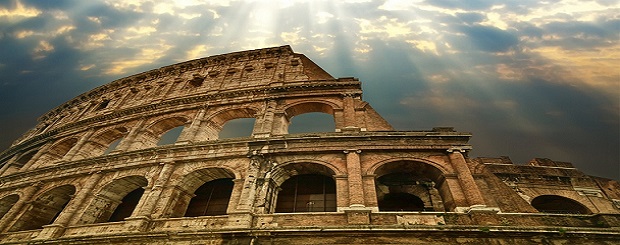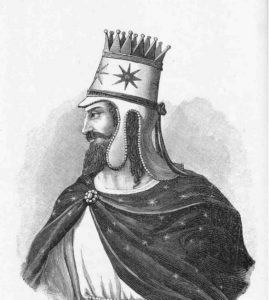
Armenia and Rome – The Unification of Armenians Under Artashes I
July 24, 2018 – Antiquities, History: Art-A-Tsolum – PREVIOUS ARTICLE:

In 190 BC, the Roman legions smashed the troops of the Seleucid King Antiochus III in the Battle of Magnesia in Asia Minor, putting the plans of Antiochus to conquer Greece to a halt. This victory marked the beginning of the Roman expansion towards the East.
The Greek influence had spread eastward long before the rule of Alexander the Great, whereas the Roman world was a completely new set of concepts for the east. In addition, unlike the Macedonians who achieved success in mere years, the Roman campaigns spanned over centuries, with their impact on the East being significantly weaker, especially in a cultural sense.
In the 2nd-1st centuries BC, the Roman Republic carried out large-scale aggressive campaigns in both East and West. Over those years, the Kingdom of Macedon was defeated and subjugated by Rome. Carthage was wiped from the face of the earth along with Corinth. The Kingdom of Pergamon was annexed to the Roman Republic in ca. 133 – 129 BC. The number of such achievements has been constantly increasing.
The conflict between the Kingdom of Armenia and the Roman Republic was inevitable. It broke out quite late, however: to be exact, in the 60s BC. Meanwhile, over the previous decades, the military commanders Artashes (Artaxias, reigned in 189 – 160 BC in Armenia) and Zareh (Zariadres) who had served under Antiochus III proclaimed Armenia a sovereign state.
A renowned Greek geographer and philosopher Strabo, whose accounts deliver invaluable information about Armenia during the Hellenistic period, writes: “Some tell that Armenia, which had been a small country in previous times, expanded due to the wars of Artaxias and Zariadres.” Here, Strabo refers to the offensives of Artashes and Zareh on all directions from their country. King Artashes I played a major role in those campaigns, becoming one of the greatest rulers of the Armenian history.
The military campaigns of Artashes were limited to the Armenian Highlands as he only sought to seize control over Armenian-populated territories. Therefore, Artashes wasn’t a conqueror but rather a collector or liberator of Armenian lands. Artashes marked his coming to power and the ensuing assertion of Armenia’s sovereignty by founding a new capital named Artashat (Artaxata in some accounts).
Strabo’s “Geography” mentioned a key fact: the whole population of Artashes’ kingdom was Armenian-speaking. This is significant because a population unified by one language doesn’t come into existence accidentally. Rather, under Artashes, the formation of the Armenian national identity was already completed or either was close to completion.
The kingdom of Artashes, occupying nearly the entirety of the Armenian Highlands, was a densely-populated country, which’s political and ethnical borders matched one another. Artashes’ interior reforms were also quite significant: he undertook the first land reform in the history of Armenia directed on the separation of private and communal lands, established the cult of the royal ancestors, and carried out a number of other reforms.


allinnet.info/antiquities/armenia-and-rome-the-unification-of-armenians-under-artashes-i/
